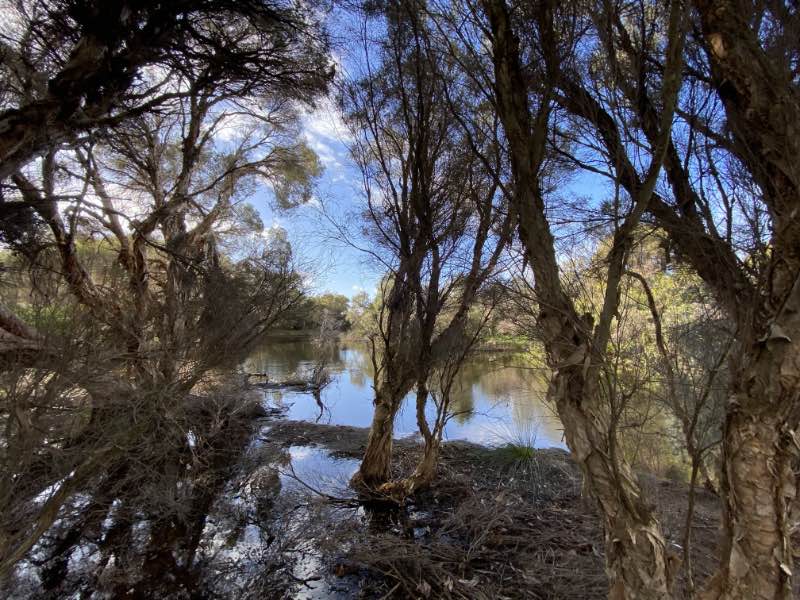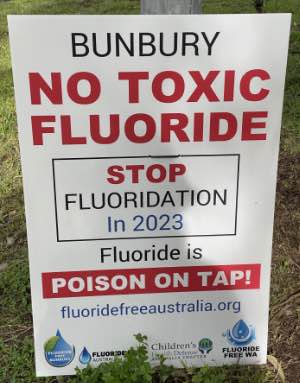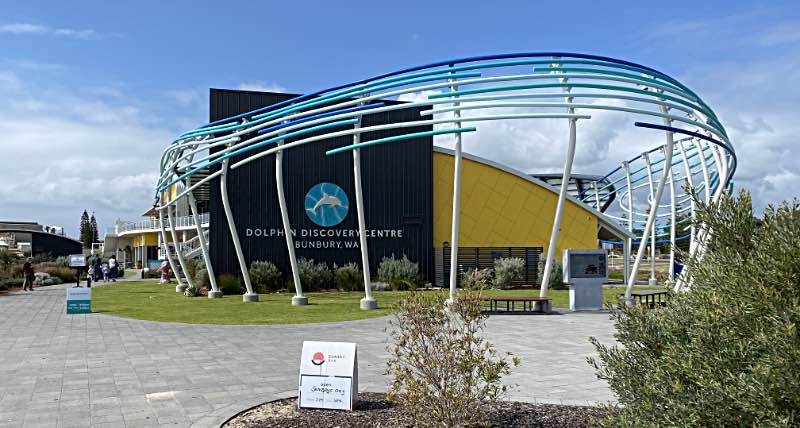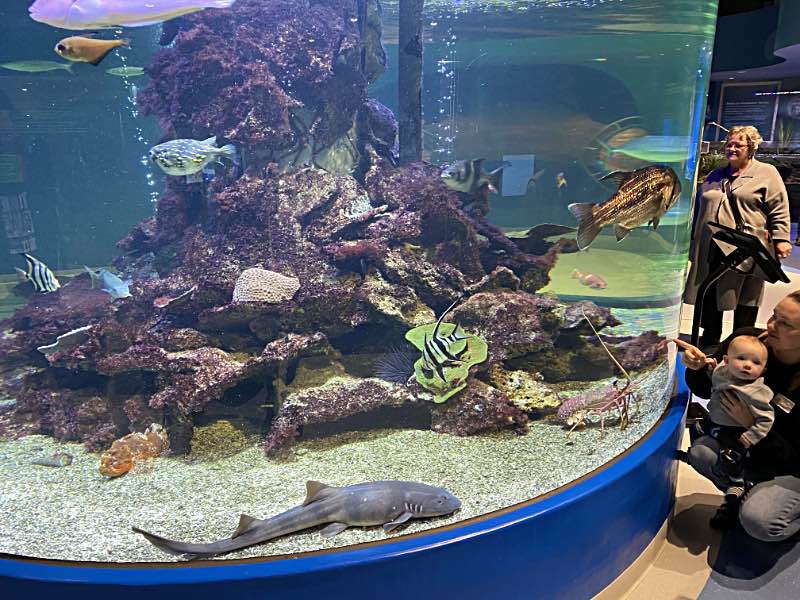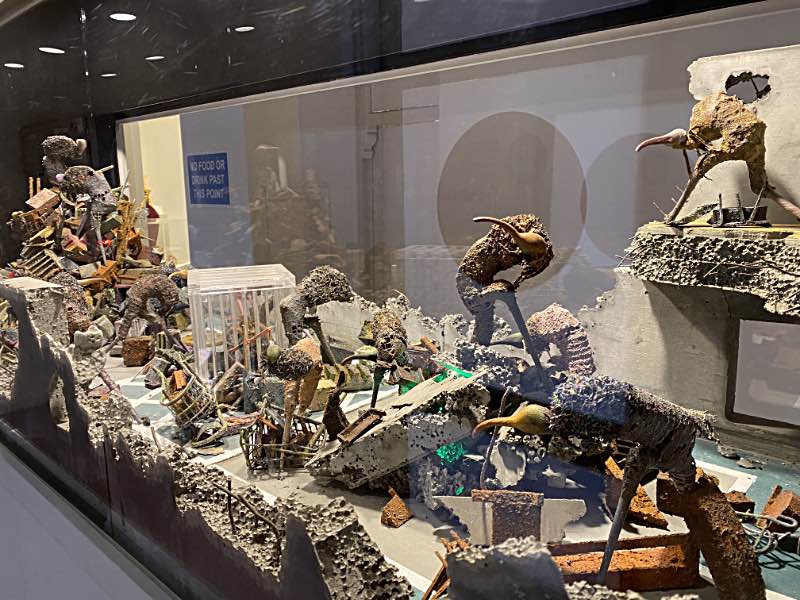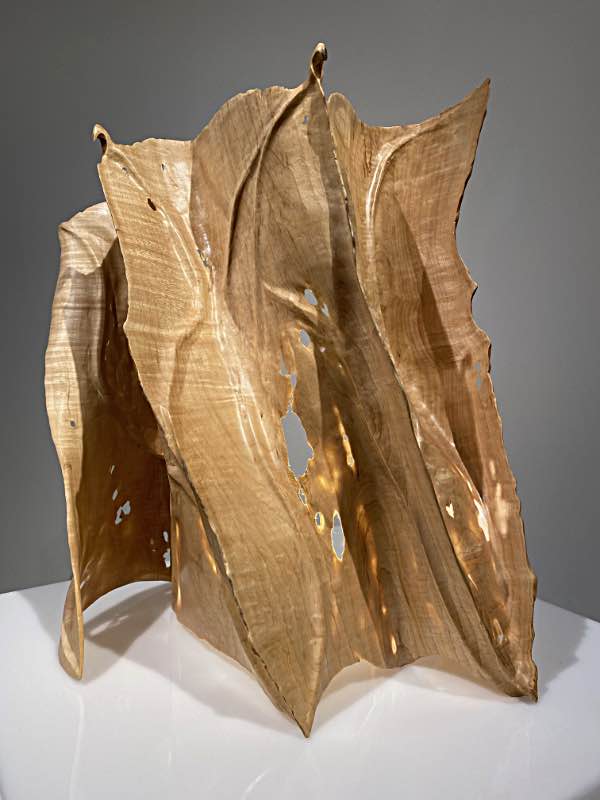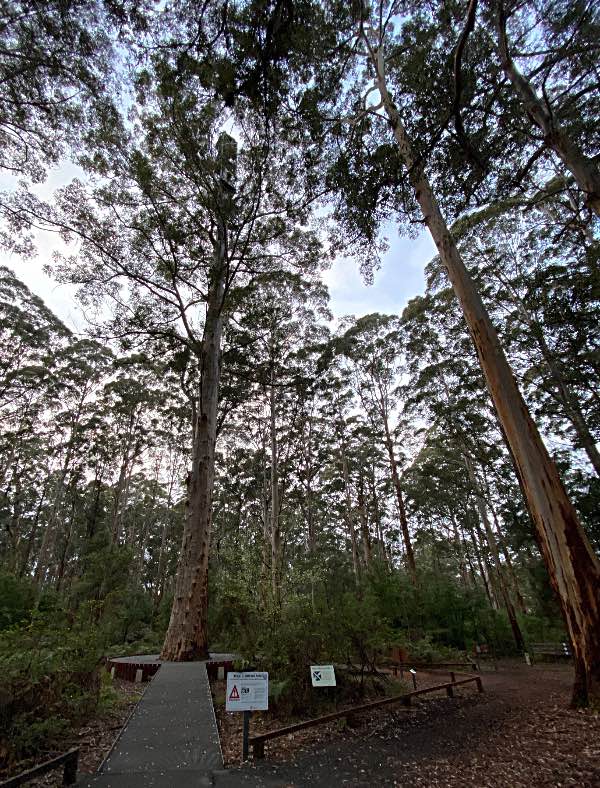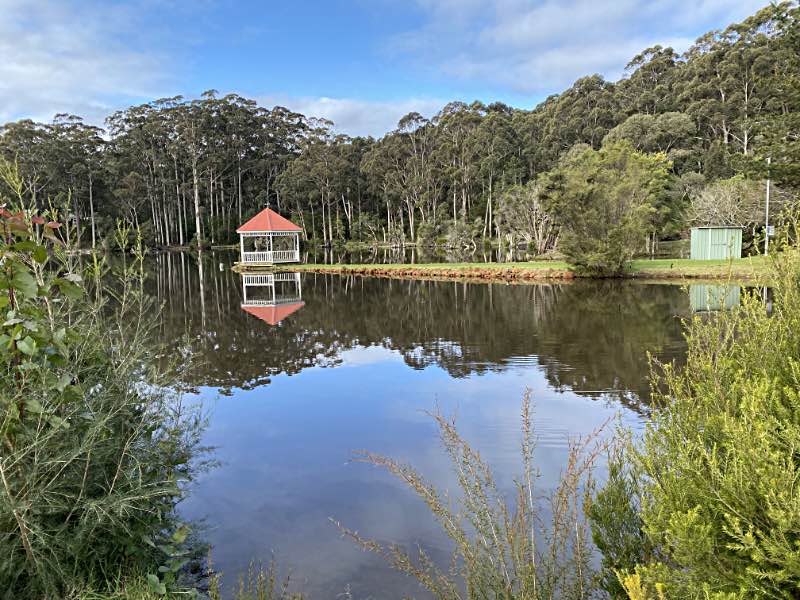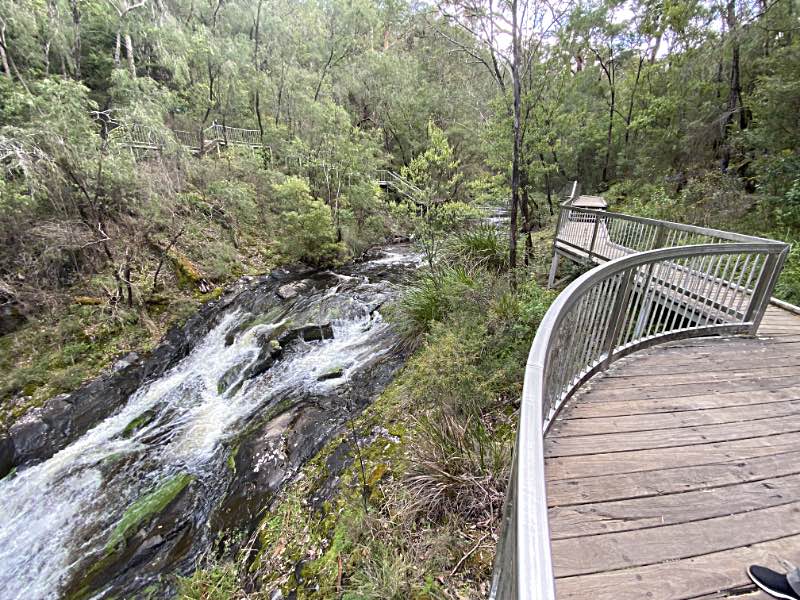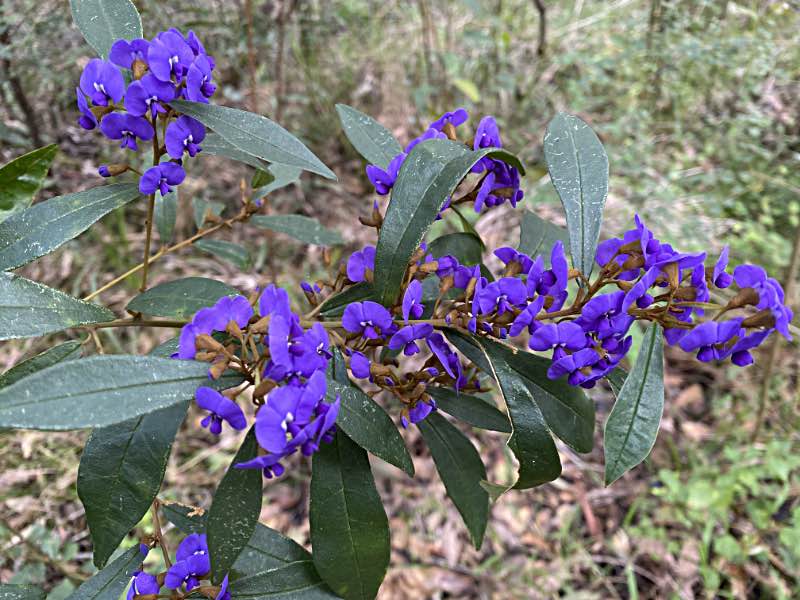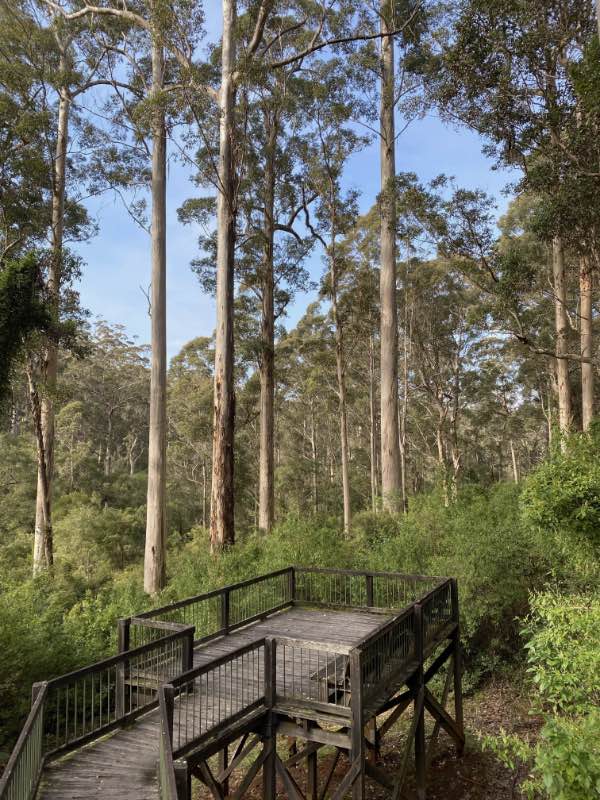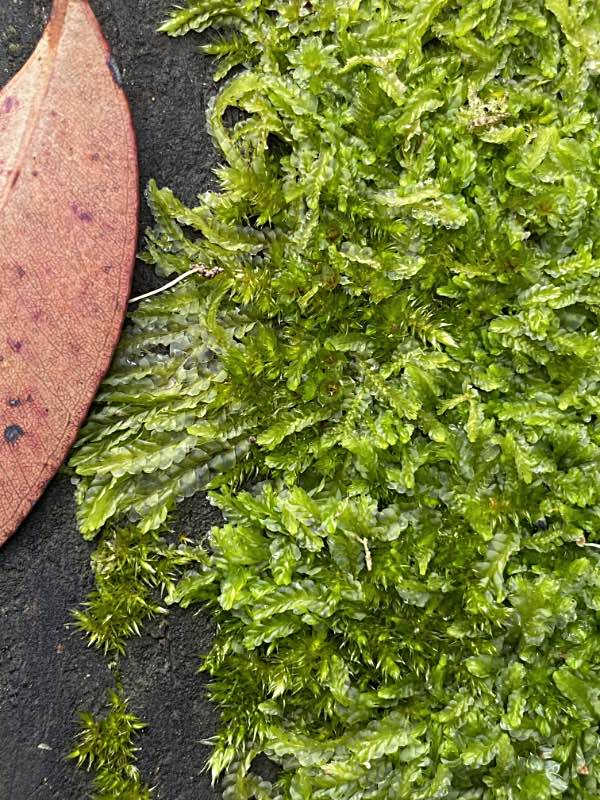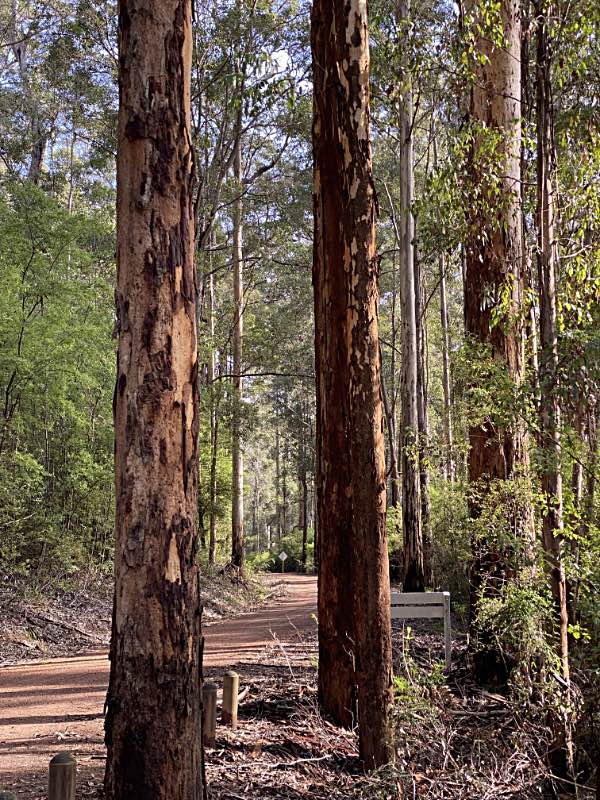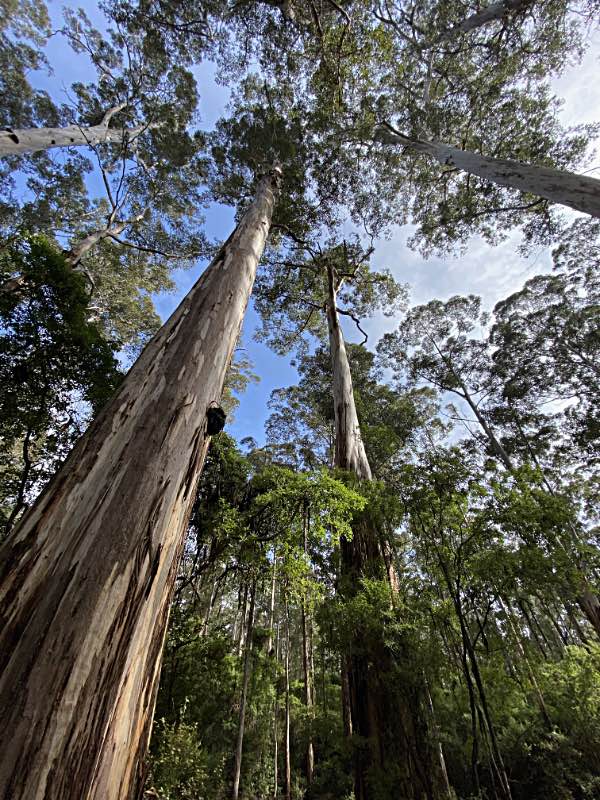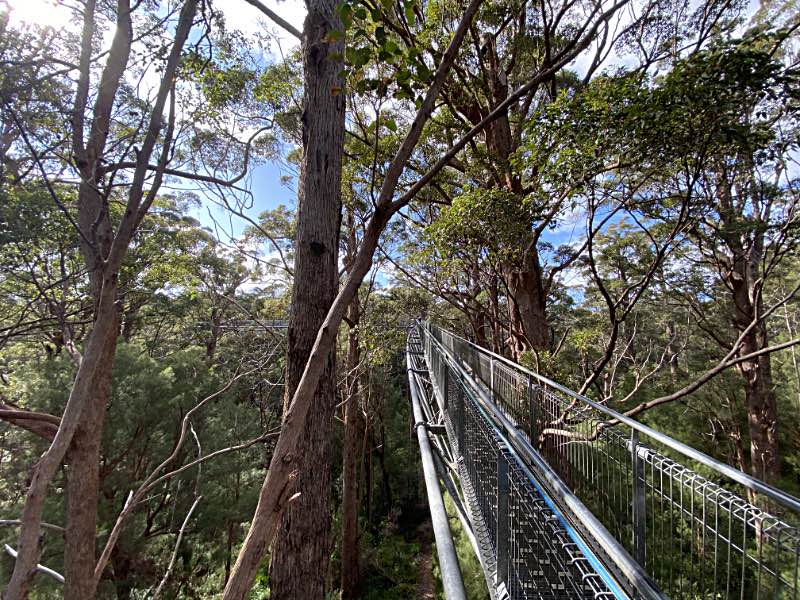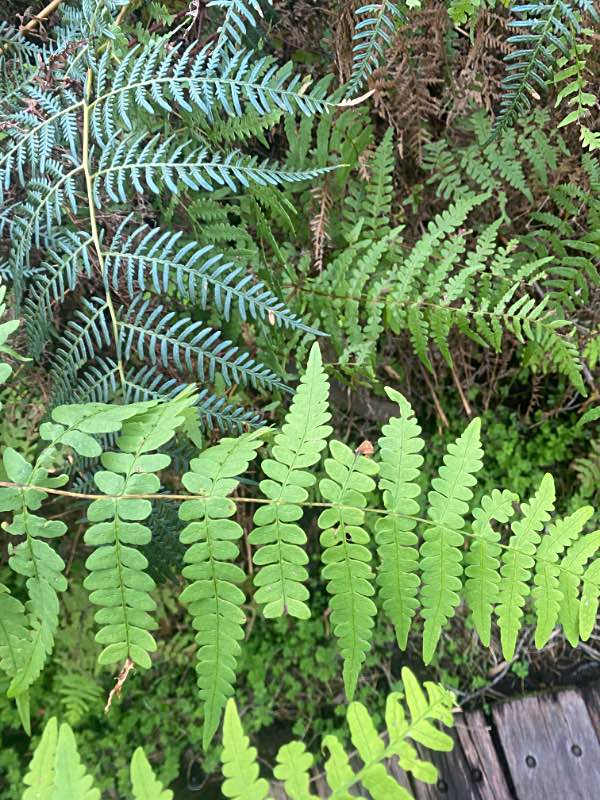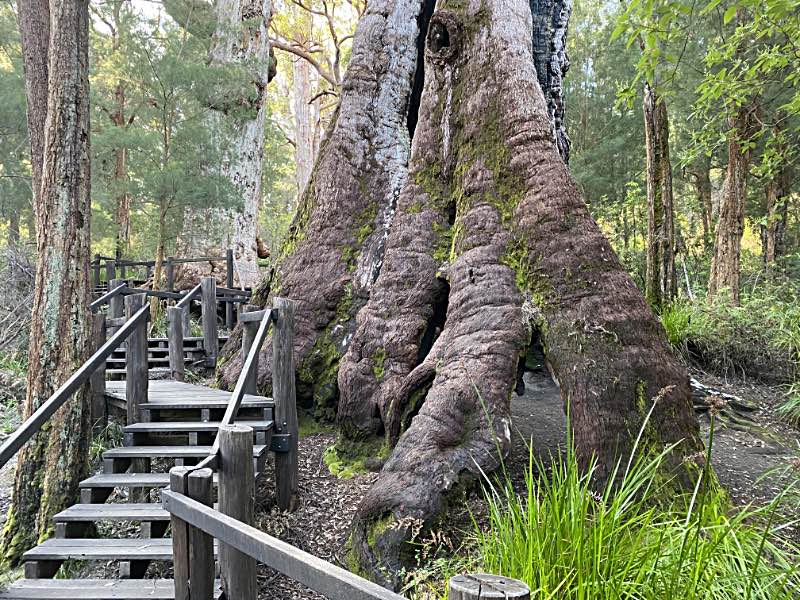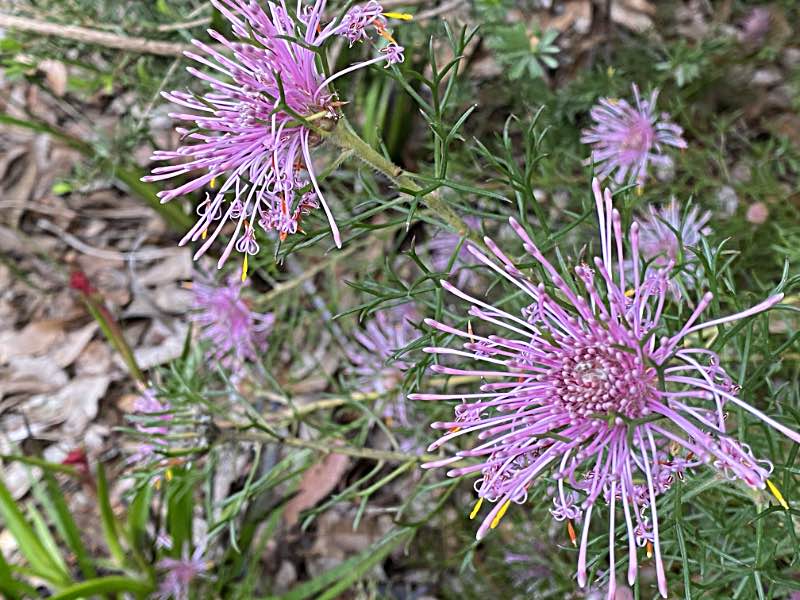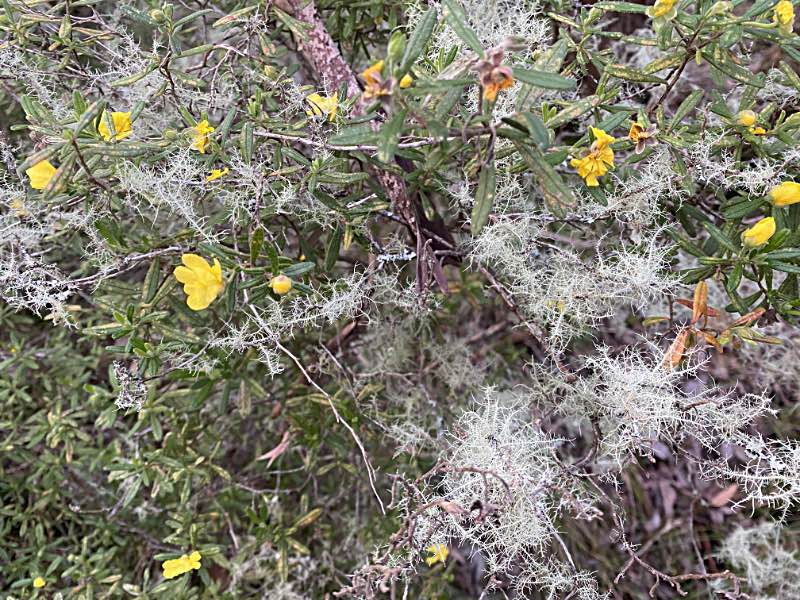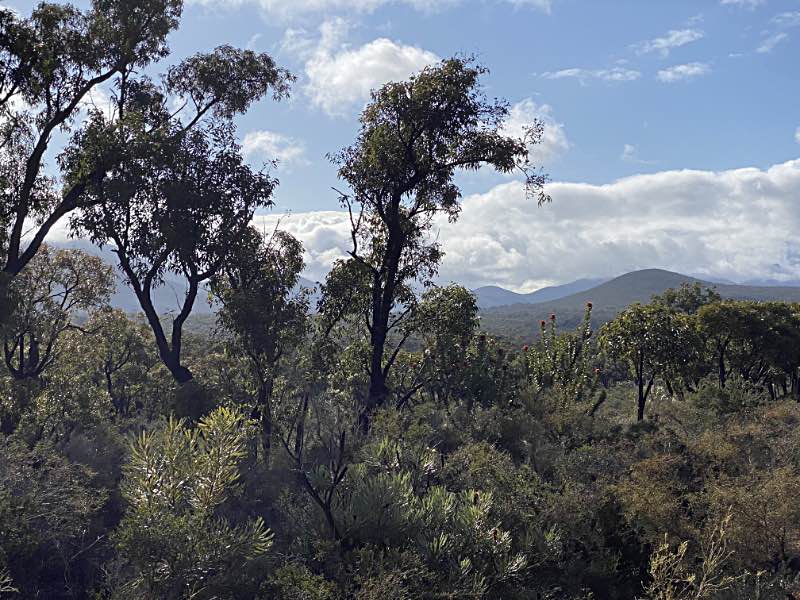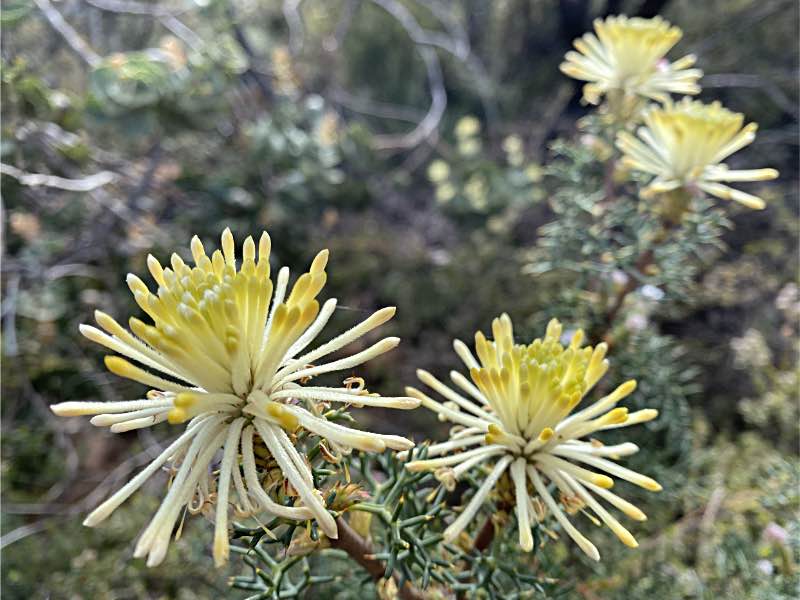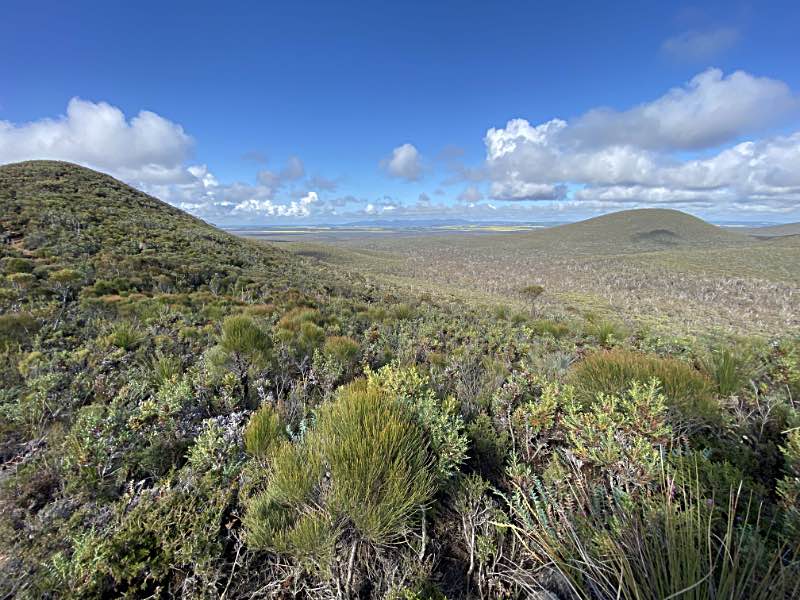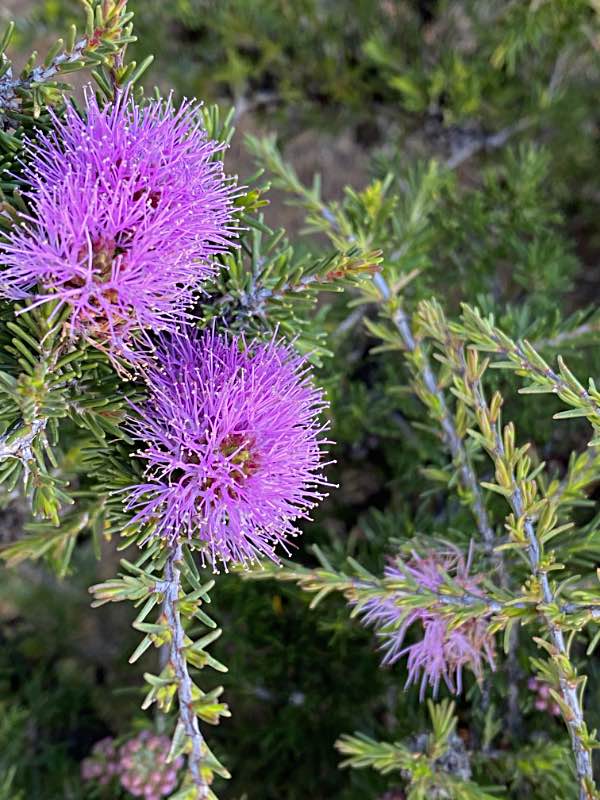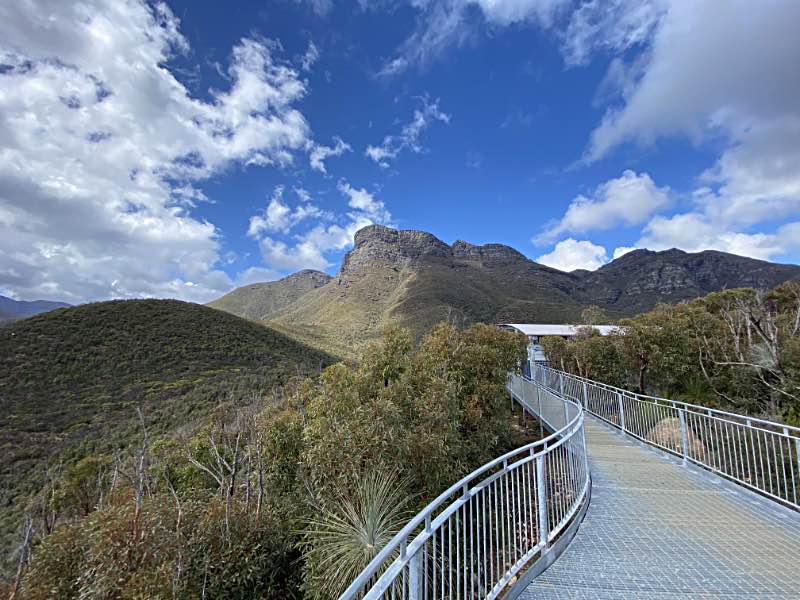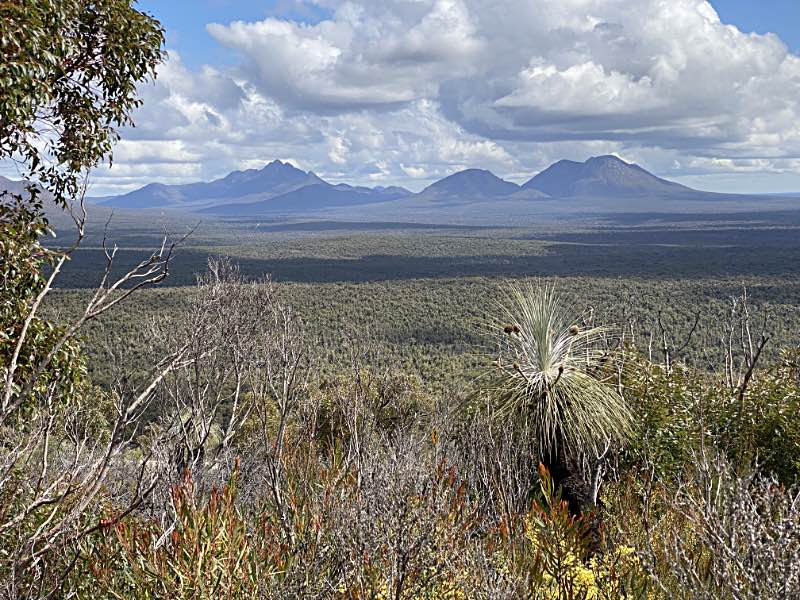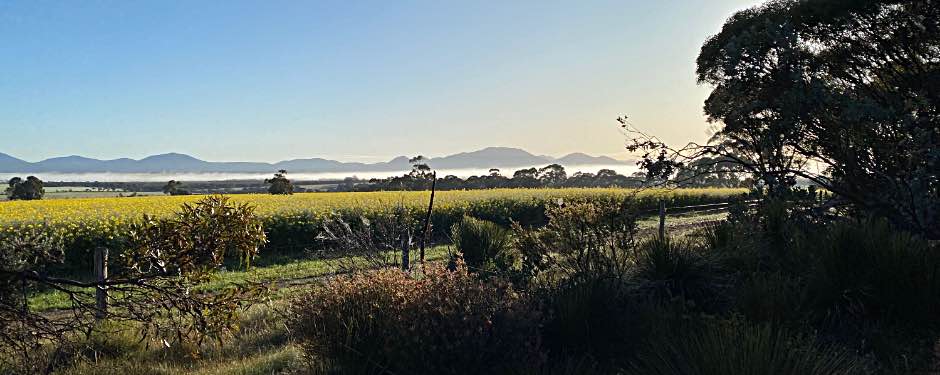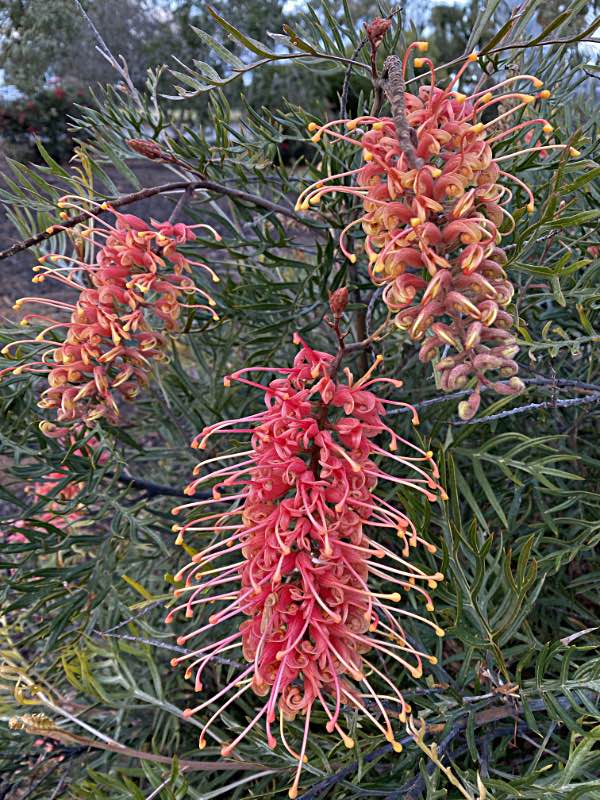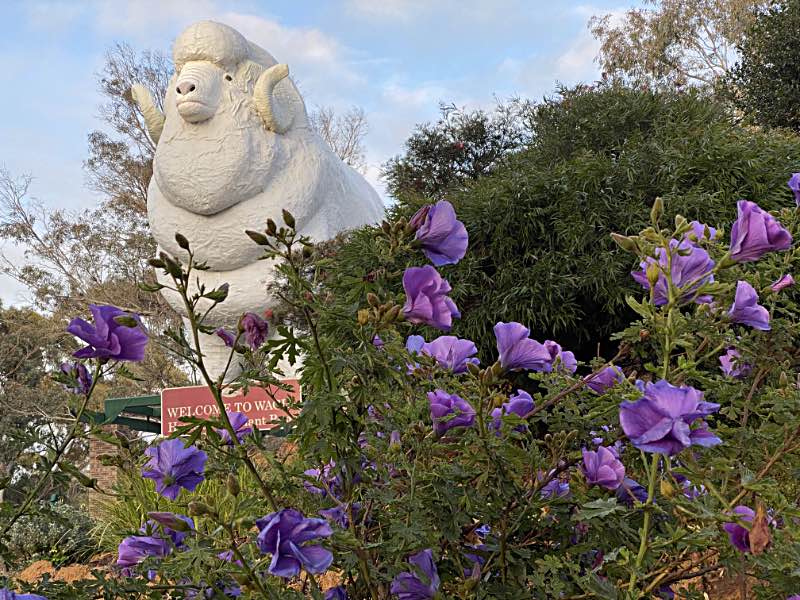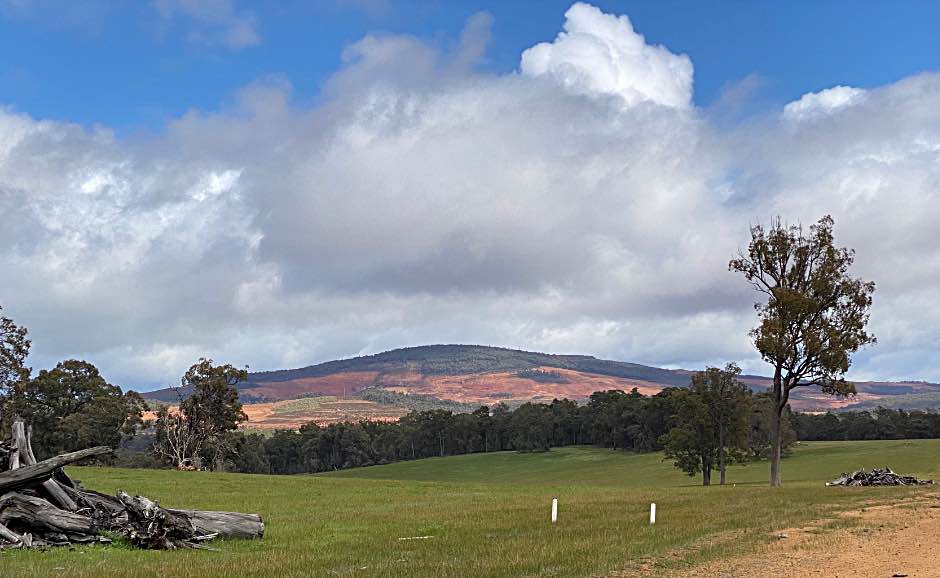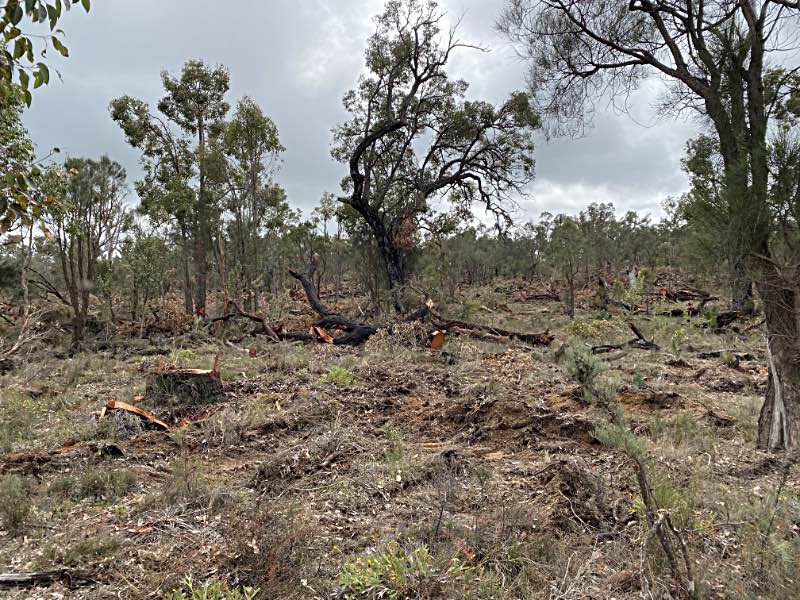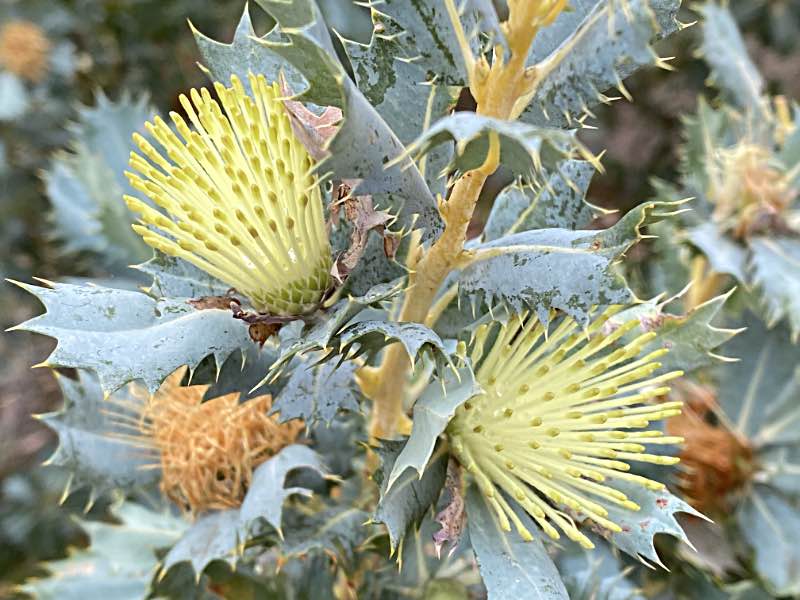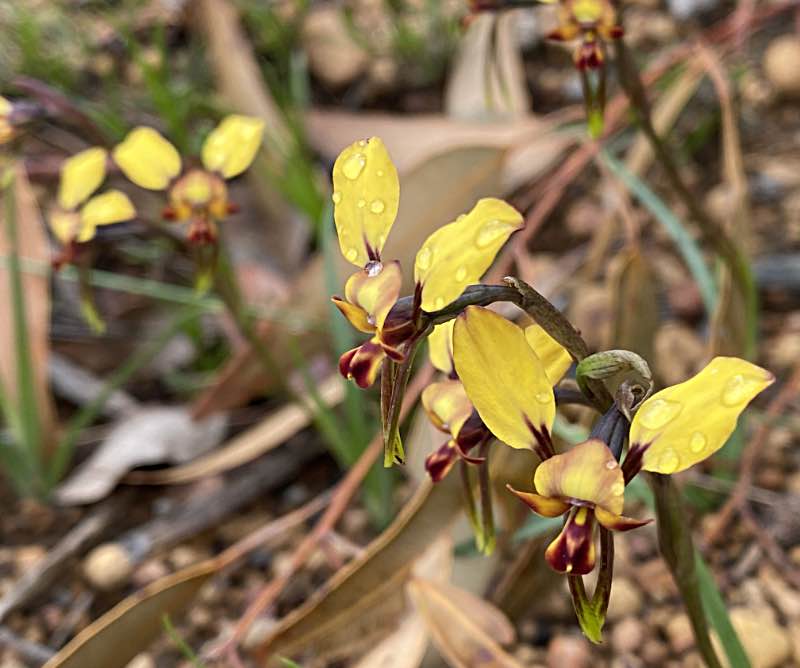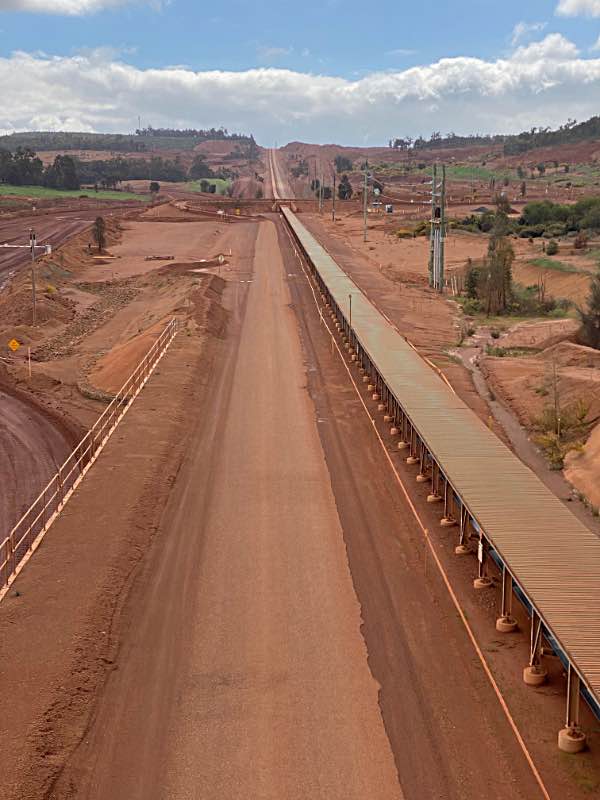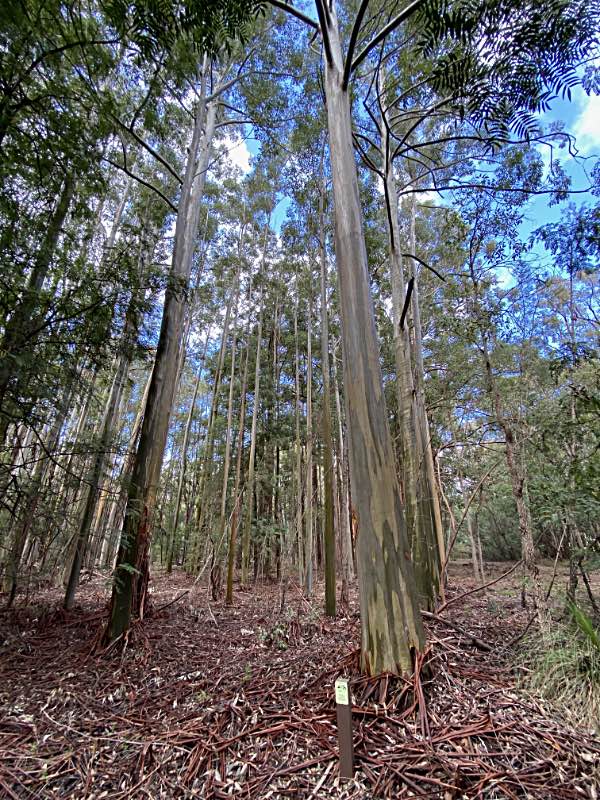The Cattle Hill trail through the forest on the north side of Walpole. An easy walk through a beautiful section of the Walpole-Nanup National Park.
Photo iPhone 11 Pro, 6mm (telephoto) lens, 2022/08/31
Some of the ferns beside the Cattle Hill path on the edge of Walpole. I can't decide whether there are two or three species here.
The specimen in the upper left is
Pteridium esculentum, commonly known as bracken fern, Austral bracken, or simply bracken.
Photo iPhone 11 Pro, 4.25mm (standard) lens, 2022/08/31
The inlet to the outer lagoon at Walpole
We did the WOW Wilderness day cruise with Gary Muir and his niece. Gary is a wealth of knowledge and a character who has to be experienced to be believed. I'd greatly recommend the day cruise to any visitor to the south of WA.
It was far more Gary's narrative that made the cruise a hit than what we saw, but that was interesting too.
We stayed on in Walpole a day longer than our original intention because the first cruise of the year was scheduled for the first day of Spring.
While in Walpole we stayed in Anna’s Cottage, Boronia Avenue (street?). We found it through AirBnB. The owner attracted several species of native birds that had become very tame. We'd strongly recommend the place.
Photo iPhone 11 Pro, 6mm (telephoto) lens, 2022/09/01
The
Giant Tingle Tree Loop, north east of Walpole, is worth a visit.
It is in the hills and there is a place along to road to the Loop where a great many trees have been cut down where you can enjoy the view over the coast to the south. Whether the view justified cutting down all those trees is questionable.
However, the Loop walk is very good and there certainly are a number of very impressive tingle trees along the way.
There are two species of Eucalypt that bare the common name tingle; the yellow tingle is Eucalyptus guilfoylei and the red tingle is Eucalyptus jacksonii.
The biggest trees are protected by boardwalks. Signs inform visitors that the tingle trees are shallow rooted and if the soil near the trees is compacted by too much foot traffic it can harm the tree's health.
Photo iPhone 11 Pro, 4.25mm (standard) lens, 2022/09/01
After Walpole we moved to Cockatoo Cottage, a farmstay between Denmark and Albany. It is entirely out in the country, on a large property that is partly used for the owner's horses and about half under natural bush. While the accommodation was a little basic, it had everything we needed, the host was very friendly and helpful. As with the place in Walpole, we'd strongly recommend Cockatoo Cottage.
This and the following few photos were taken on this property. I don't know the species of the flower, but suspect that it is one of the Grevillea's.
Photo iPhone 11 Pro, 4.25mm (standard) lens, 2022/09/02
The flowers could be
Isopogon formosus.
Photo iPhone 11 Pro, 4.25mm (standard) lens, 2022/09/02
It's not unusual to see lichen on trees in the Australian bush, but it is unusual to see so much lichen hanging from so many twigs as in this area.
There are two species of lichen in the photo.
Photo iPhone 11 Pro, 4.25mm (standard) lens, 2022/09/04
This photo gives a better idea of how widespread the lichen was in this little patch of the bush at Cockatoo Cottage.
Photo iPhone 11 Pro, 4.25mm (standard) lens, 2022/09/04
Following our stay at Cockatoo Cottage we moved to another farmstay, this one about 10km northeast of Mount Barker, Bluff Knoll House.
Beautiful views of the Stirling Range were to be seen in changing weather and lighting conditions from Bluff Knoll Cottage (which was actually a full modern house) I don't think we did actually see Bluff Knoll itself from Bluff Knoll Cottage; it is on the eastern end of the range and most likely hidden behind the nearer mountains.
Photo iPhone 11 Pro, 6mm (telephoto) lens, 2022/09/05
My wife and I did a drive through the Stirling Range, starting at the western end of the Stirling Range Scenic Drive and going to the Bluff Knoll viewing area and then south toward the Porongurups.
This view shows fairly typical bush of the lower areas and some of the hills of the more western part of the range. I was impressed by how rounded most of the hills in the western part of the range were; toward the eastern end many were more rugged and rocky.
Photo iPhone 11 Pro, 6mm (telephoto) lens, 2022/09/05
Possibly
Isopogon anemonifolius, one of an enormous number of wildflower species to be seen in the Stirling Range in early spring - when we visited.
Photo iPhone 11 Pro, 4.25mm (standard) lens, 2022/09/05
The rounded hills of the western Stirling Range,
Xanthorrhoea preissii in the foreground. Taken from the path up to the Central Lookout looking roughly east.
Photo iPhone 11 Pro, 4.25mm (standard) lens, 2022/09/05
Again, from the path to the central lookout, this time looking roughly NW. My wife Denece in the foreground.
The hills are mostly rounded here too. They become more craggy toward the east.
Photo iPhone 11 Pro, 4.25mm (standard) lens, 2022/09/05
Looking south, the Porongurups in the far distance. Note the many dead trees in the middle distance, the result of a fire.
Again, from the path to the central lookout.
Perfect weather for the visit, enough clouds to add a bit of interest.
Photo iPhone 11 Pro, 1.54mm (extra wide angle) lens, 2022/09/05
